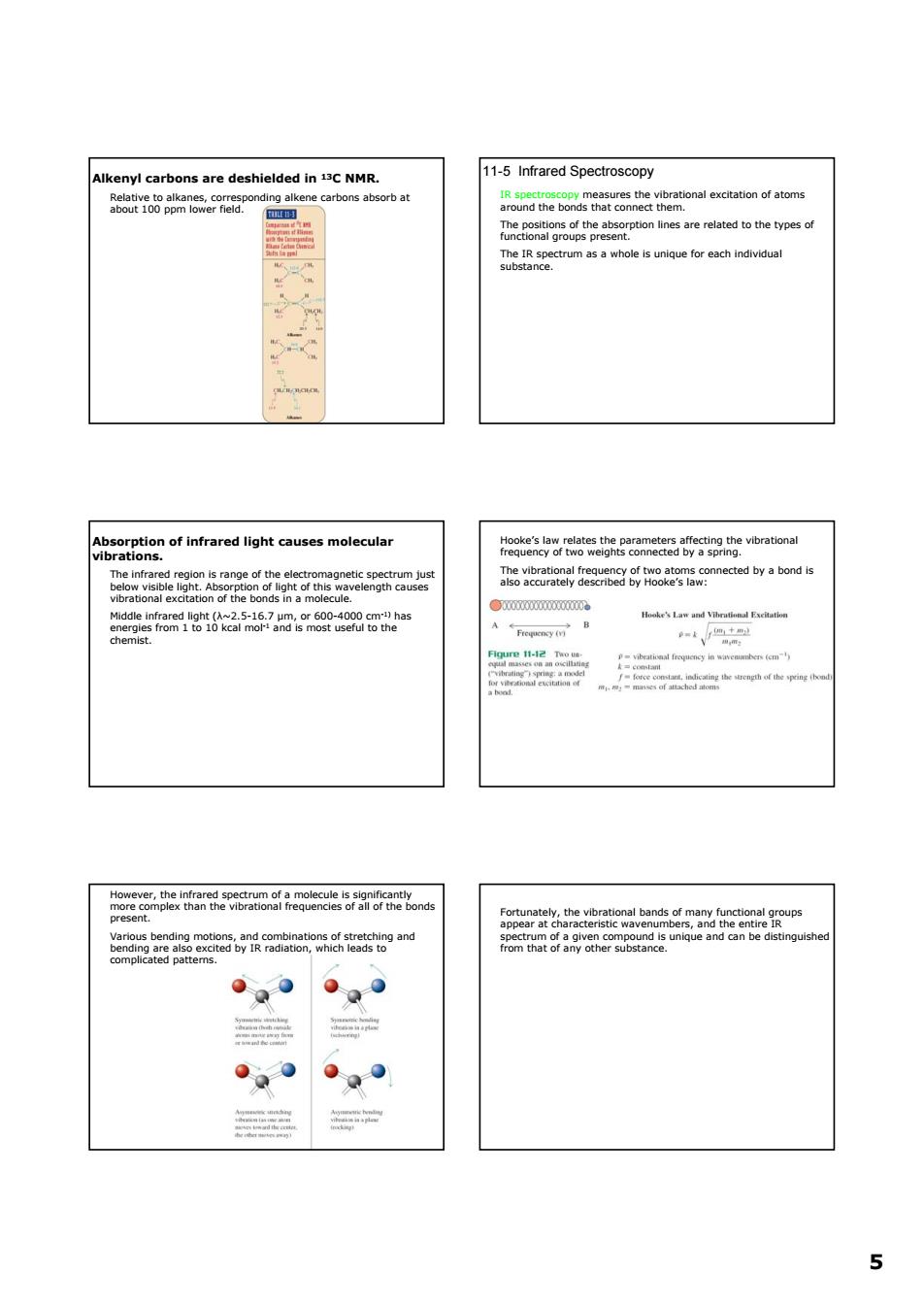正在加载图片...

Alkenyl carbons are deshielded in C NMR. 11-5 Infrared Spectroscopy Re8avo0kn6eoeiaord 8agsaa2rtontnesereeatepsd Absorption of infrared light causes molecular ed by a bond e862798s Heoke's Lam and n-ta mora eof he d 22Rean治d 0.000 0000 5 5 Alkenyl carbons are deshielded in 13C NMR. Relative to alkanes, corresponding alkene carbons absorb at about 100 ppm lower field. 11-5 Infrared Spectroscopy IR spectroscopy measures the vibrational excitation of atoms around the bonds that connect them. The positions of the absorption lines are related to the types of functional groups present. The IR spectrum as a whole is unique for each individual substance. Absorption of infrared light causes molecular vibrations. The infrared region is range of the electromagnetic spectrum just below visible light. Absorption of light of this wavelength causes vibrational excitation of the bonds in a molecule. Middle infrared light (λ~2.5-16.7 μm, or 600-4000 cm-1) has energies from 1 to 10 kcal mol-1 and is most useful to the chemist. Hooke’s law relates the parameters affecting the vibrational frequency of two weights connected by a spring. The vibrational frequency of two atoms connected by a bond is also accurately described by Hooke’s law: However, the infrared spectrum of a molecule is significantly more complex than the vibrational frequencies of all of the bonds present. Various bending motions, and combinations of stretching and bending are also excited by IR radiation, which leads to complicated patterns. Fortunately, the vibrational bands of many functional groups appear at characteristic wavenumbers, and the entire IR spectrum of a given compound is unique and can be distinguished from that of any other substance